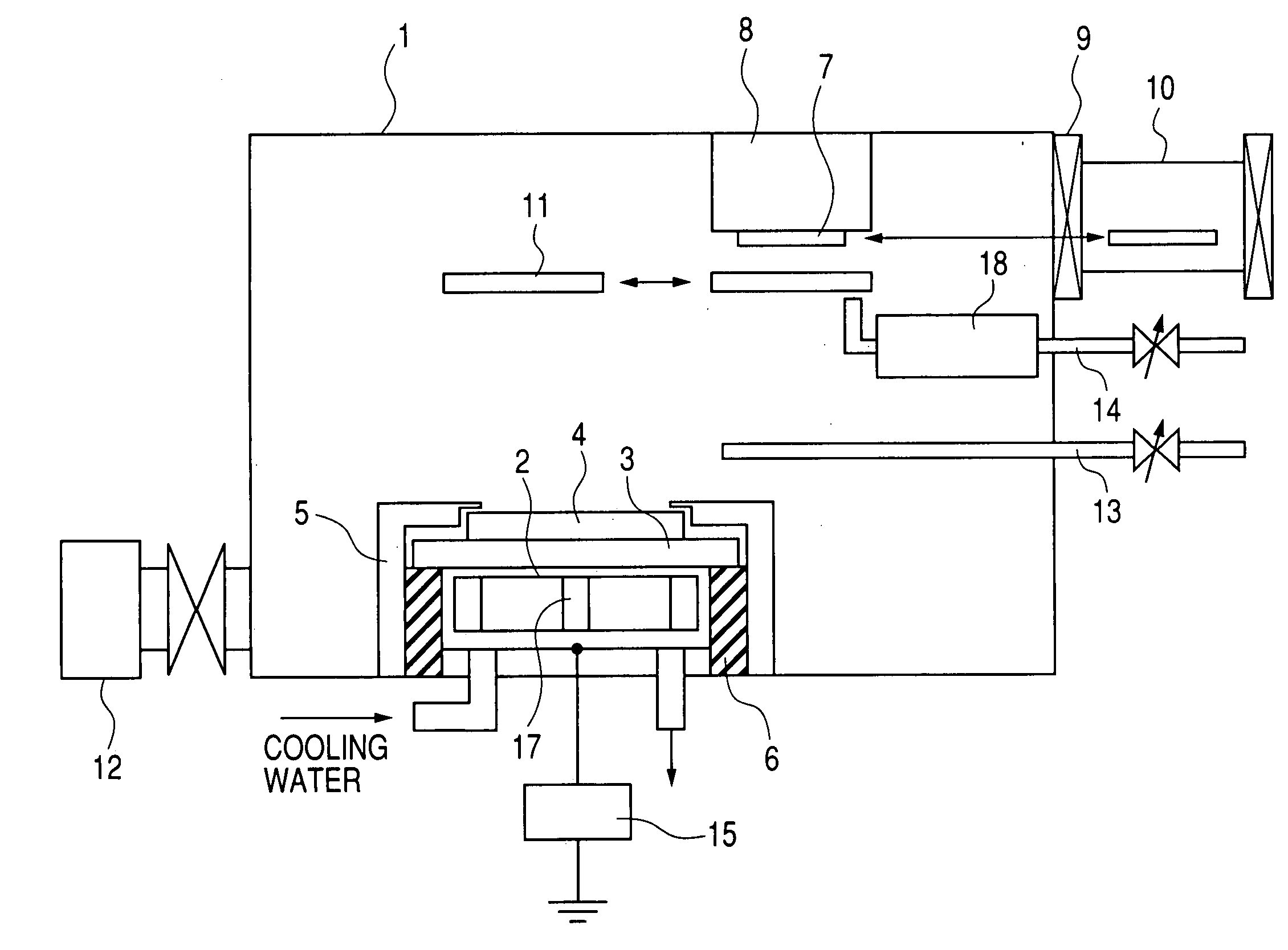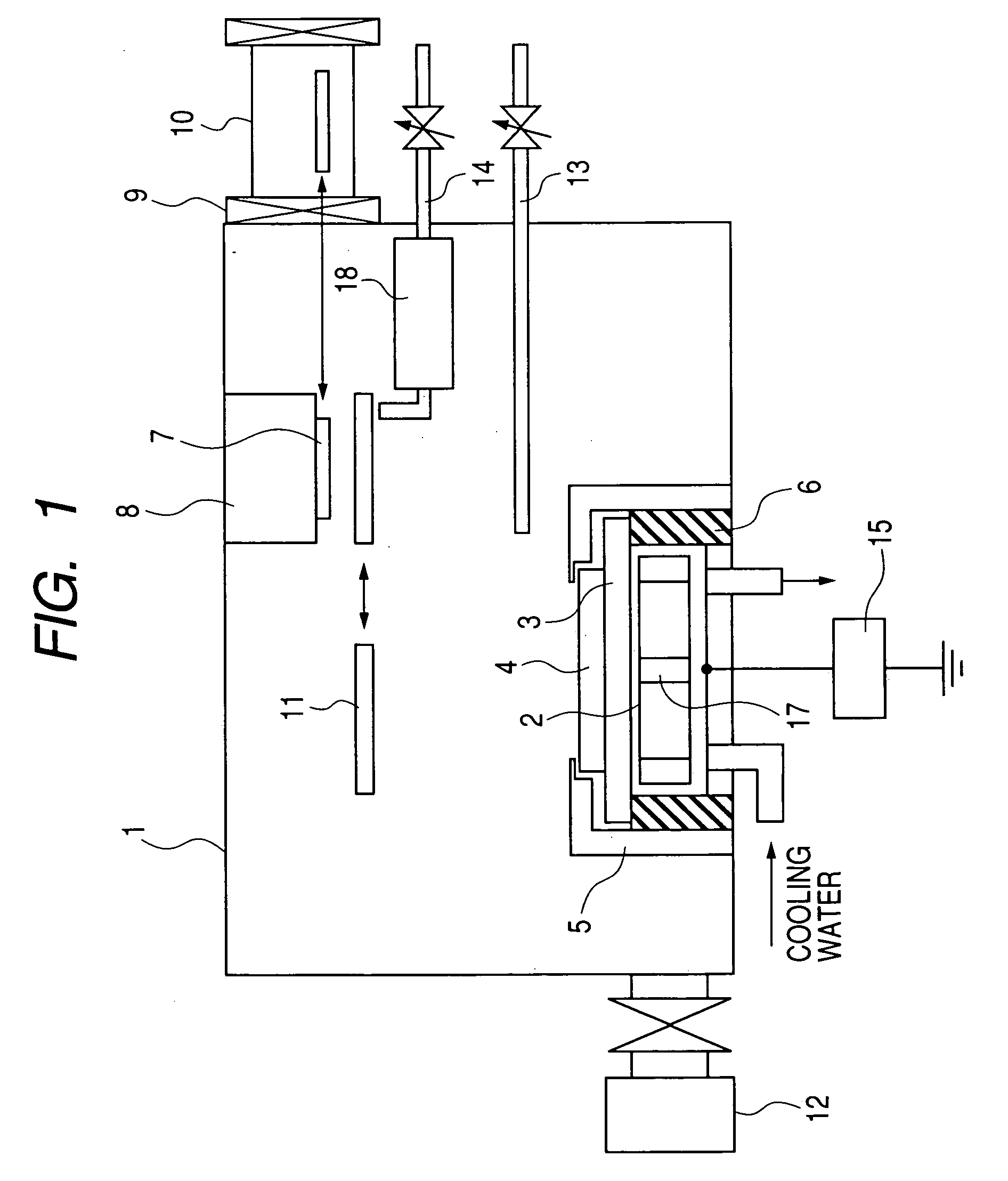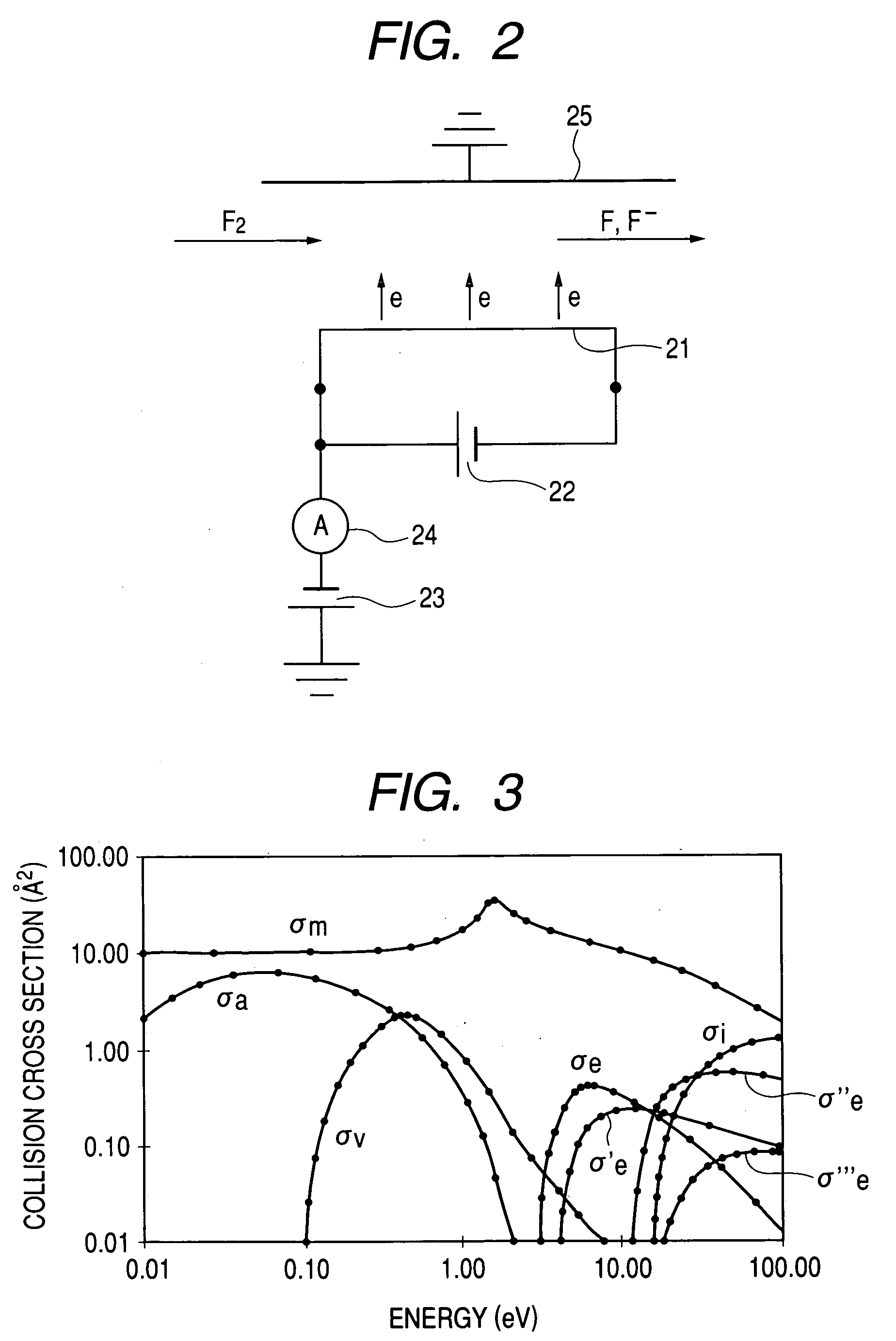Method and apparatus for forming fluoride thin film
a technology of fluoride thin film and forming method, which is applied in the direction of electrolysis components, vacuum evaporation coatings, coatings, etc., can solve the problems of poor adhesion between the film and the substrate, insufficient strength of the obtained film, and difficult development of automatic production machines
- Summary
- Abstract
- Description
- Claims
- Application Information
AI Technical Summary
Benefits of technology
Problems solved by technology
Method used
Image
Examples
example 1
FIG. 1 is a schematic sectional view of a DC magnetron sputtering apparatus according to Example 1 of the present invention. As shown in FIG. 1, the sputtering apparatus is equipped with a vacuum vessel 1 that can maintain the inside in a substantially vacuum state. On the bottom center of the vacuum vessel 1, a cathode 2 that houses a magnet therein and can be cooled by water is provided. A backing plate 3 is placed on the upper surface of the cathode electrode 2, and a high-purity Mg metal target 4 is fixed on the upper surface of the packing plate 3. The material for the target may include various metals, and oxygen-added metals or fluorine-added metals can be used as long as the electrical resistance is low. An anode electrode 5 is fixed to the vacuum vessel 1 with a predetermined gap to the target 4. Incidentally, an insulator 6 is disposed between the anode electrode 5 and the backing plate 3.
On the upper surface of the vacuum vessel 1, an article to be processed 7 is movabl...
example 2
In this Example, a fluoride thin film was formed on a substrate by following the same procedure as in Example 1 with the exception that an La metal target was used in place of the Mg metal target and SF6 gas was used in place of F2 gas.
FIG. 4 shows a graph of the electron collision cross section of SF6 gas. As is seen from the graph of FIG. 4, also in the case of SF6 gas, although the dissociative electron attachment cross section is large when the electron energy is 1 eV or less, there is a peak of the dissociative electron attachment cross section at around 5 eV. Therefore, in this Example, 5 V was applied to the accelerating power source so as to accelerate thermal electrons emitted from the filament in the radical generator to 5 eV. By elevating the accelerating voltage, the current of the thermal electrons could be increased, thereby generating a sufficient quantity of active fluorine.
The obtained LaF3 thin film exhibited no absorption throughout a region ranging from the v...
PUM
| Property | Measurement | Unit |
|---|---|---|
| refractive index | aaaaa | aaaaa |
| ionization energy | aaaaa | aaaaa |
| antireflective | aaaaa | aaaaa |
Abstract
Description
Claims
Application Information
 Login to View More
Login to View More - R&D
- Intellectual Property
- Life Sciences
- Materials
- Tech Scout
- Unparalleled Data Quality
- Higher Quality Content
- 60% Fewer Hallucinations
Browse by: Latest US Patents, China's latest patents, Technical Efficacy Thesaurus, Application Domain, Technology Topic, Popular Technical Reports.
© 2025 PatSnap. All rights reserved.Legal|Privacy policy|Modern Slavery Act Transparency Statement|Sitemap|About US| Contact US: help@patsnap.com



